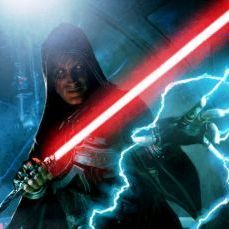While wading through the treacherous universe of the Star Wars saga, you will inevitably have come across the word "canon", but just what does that mean?
What is Canon?
The short answer is that Star Wars Canon is the official story of the Star Wars universe.
The longer, more specific answer, is that the official canon consists of the Star Wars movies, The Clone Wars and Rebels animated TV shows, and any material published after 25th April 2014.
There are a few exceptions to the above rule, and how we got here needs a little more explanation.
The Expanded Universe
Shortly after Disney acquired Lucasfilm and the Star Wars franchise, the Lucasfilm Story Group was created to redefine canon by decided which stories and events are officially recognised as being the true story of Star Wars. As a result, the vast majority of the Star Wars Expanded Universe (now known as Star Wars Legends) was stripped of it's canon status.
If you're not familiar with the Expanded Universe, it was a multi-layered monster of interconnected stories, some of which were more important than others. George Lucas and Lucasfilm did not originally set any standards when it came to canon, so by the early 1990s that job had been taken on by the publishing division, Lucas Licensing.
Unlike the equal status of the current canon, the Expanded Universe has several levels:
- G-canon (standing for George or Gospel, depending on who you ask) included the movies themselves, and any statements or explanation from George Lucas himself. Anything that contradicted the movies was definitely not canon.
- T-canon was created for The Clone Wars television series, and would have included other television projects, had they materialised.
- C-canon, or Continuity canon, formed the bulk of the Expanded Universe. Novels, comics, games, cartoons, and television movies usually fell into this category.
- S-canon is secondary canon, and was usually older material that predated efforts to ensure continuity. It was mainly used for reference where it wasn't contradicted by something higher up the list. Many older stories were promoted to C-canon.
- D-canon was used for material from the Star Wars Detours animated series.
- N-canon was not considered canon, such as the Infinities stories.
It's worth noting that George Lucas never considered the Expanded Universe to be part of his vision for Star Wars, and described the movies and the EU as being two separate worlds.
So there you have it, you are now fully armed to explore the Star Wars universe and know whether you are reading official canon or not!


Recommended Comments
Create an account or sign in to comment
You need to be a member in order to leave a comment
Create an account
Sign up for a new account in our community. It's easy!
Register a new accountSign in
Already have an account? Sign in here.
Sign In Now